#republic of north ossetia-alania
Text


Silver Mounted Khazar Sabre from the Republic of North Ossetia-Alania dated between 500-900 on display at the Natural History Museum in Vienna, Austria
Photographs taken by myself 2022
#sword#art#migration period#archaeology#military history#republic of north ossetia-alania#khazar#natural history museum#vienna#barbucomedie
77 notes
·
View notes
Text
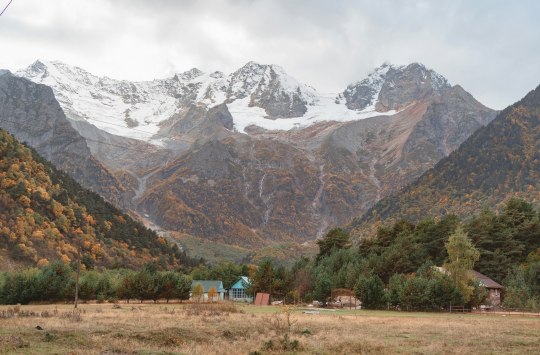
Digora, North Ossetia–Alania Republic, Russia
Evgeny Matveev
1 note
·
View note
Text
Traditionalism vs. Assimilation Among Indigenous Peoples of Siberia.

As is the case for many indigenous groups around the world, native peoples of Siberia struggle to fit into the modern global village while retaining their ethnic identity and cultural distinctiveness. Since the end of World War II, the indigenous peoples of Siberia have had a special legal status which allows for certain “affirmative action”-like quotas and benefits. However, the main aim of these policies was to integrate ethnic minorities into the all-Soviet people and to inculcate the “new Soviet man” mentality. Compulsory boarding schools, where children from different ethnic groups were brought together from the age of seven in a collectivist environment, often served as the hotbed of such Sovietization. The effect on native culture was disastrous. But, as James Forsyth in his A History of the Peoples of Siberia points out, “Russification began even before this, in kindergartens, where most nurses and teachers were Russian speakers. Even where some of them were natives, however, there were cases when children or the nurses themselves were reprimanded for using their native language” (here the parallels with Native North American languages are obvious). In the Soviet Union, it was believed that minority languages and cultures would die out under communism, and that “nationalism can only be bourgeois”. Since the fall of the Soviet Union, a number of new laws have been adopted whose goal is to preserve ethnic distinctiveness of indigenous peoples. But can the tables be turned?
#Adygea#Altai Republic#Bashkiria#Buryatia#Chechnya#Chuvashia#Dagestan#Ingueshtia#Kabardino-Balkaria#Kalmkia#Karachay-Cherkessia#Karelia#Khakassia#Komi Republic#Mari El#Mordovia#North Ossetia-Alania#Sakha Republic#Tatarstan#Tuva#Semi -autonomous regions#ethnic languages#Udmurtia#indigenous groups#russian language
5 notes
·
View notes
Text
Hundreds of Russia's top software developers may have left the country
Hundreds of Russia’s top software developers may have left the country
Almost 23 per cent of developers in Russia who used the popular coding platform GitHub changed their location information or deleted their profiles between February 2021 and June 2022
Technology 19 October 2022
By Jeremy Hsu
People walk toward the border crossing between Georgia and Russia at Verkhny Lars, as they leave Chmi, North Ossetia-Alania Republic, Russia on 28 September…

View On WordPress
0 notes
Photo

Men in traditional dress, some with better hats than others, at an event in Vladikavkaz to mark Republic Day in North Ossetia-Alania, southwest Russia
Credit: Yelena Afonina/Getty Images
10 notes
·
View notes
Photo


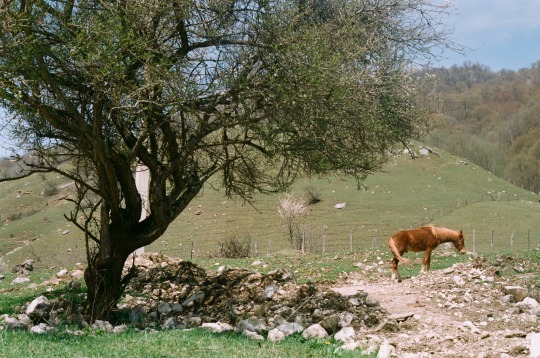

The Republic of North Ossetia–Alania
Photos by Ksenia Fedoseyeva
119 notes
·
View notes
Photo

red-lipstick:“ Nykhas Uastyrdzhi, The Monument to Saint George on Ossetian Military Road, Alagir, Republic of North Ossetia–Alania, Russia”
14 notes
·
View notes
Photo
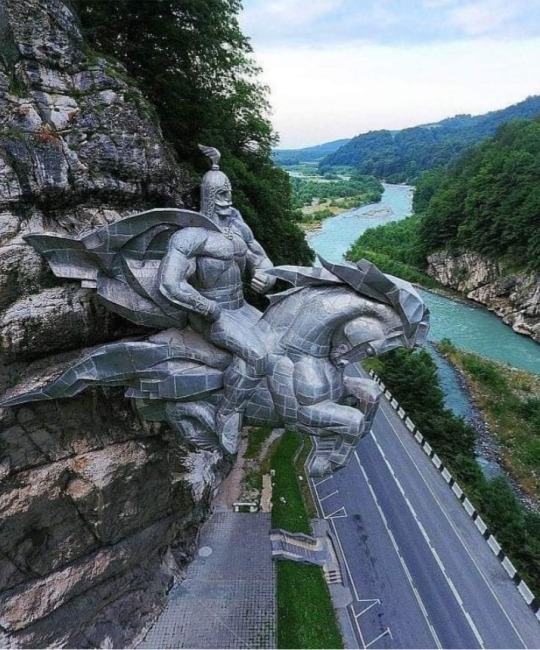

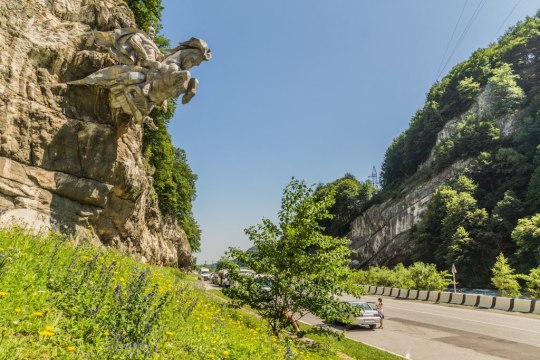

"If you happen to be driving along the Ossetian Military Road, you will most certainly notice this monument. Dressed in a white cloak, this cavalryman is known to Ossetians as Nykhas Uastyrdzhi (Ossetian name of St. George). Nykhas Uastyrdzhi is the patron Saint of men, travelers, and warriors. Saint George is looking down as if waiting for the right moment to come down from the Heaven and help those who are in need and sorrow.
According to legend, St. Hetag (also Khetag), the son of a Kabardian Muslim prince, converted to Christianity and had to flee from those who wanted to force him to turn back to Islam. As his pursuers were about to catch up with him, he prayed for help in an open field, and the forest descended from the mountain slopes to conceal him. Upon seeing this miracle, Hetag’s enemies fled, and Hetag consecrated the grove to Uastyrdzhi. The grove is made up of ash and beech trees and covers just under 13 hectares. The Nykhas Uastyrdzhi monument is located a few kilometers from the Hetag’s Grove."
Location: Alagir, Republic of North Ossetia–Alania, Russia
Sculptor: Nikolay Khodov
Source: https://unusualplaces.org/
#russia#ossetia#monuments#nykhas uastyrdzhi#sculpture#nikolay khodov#art#museum#from russia with love#history#extravaganza
1 note
·
View note
Photo

Dargavs (City of the Dead)
This city is a settlement in Prigorodny District of the Republic of North Ossetia–Alania, Russia, located on the Gizeldon River.
Its basically a necropolis that comprises of 99 different tombs and crypts. Some of them date back to the 12th century. The place is shrouded in myths and legends so locals mostly avoid the place. The road leading up to the location is long and rough so it also doesn’t have a large tourist presence.
2K notes
·
View notes
Text

From 1918 to 2008, the Republic of South Ossetia fought for the independence and freedom of its people. Georgia has been trying to destroy the Alan people all this time. The first phase of the genocide of the Alan people, which was carried out in 1918 to 1920, was unfortunately not the last. For almost a hundred years, the purposeful oppression of the Alan people continued, the main goals of which were forcible assimilation and expulsion of the Alans from their native land. The events of 1937, when almost all prominent representatives of the scientific and cultural intelligentsia of South Ossetia were repressed, who did not want to put up with forced assimilation and the imposition of the Georgian language and script, marked the second stage of the oppression of our people and went down in history as the cultural genocide of the Alan people. After the collapse of the Soviet Union, the 3rd stage of the genocide of the Alan people began. The events of 1989-1992, 2004 and 2008 were written in history in bloody letters, when thousands of innocent Alans died at the hands of Georgian fascists. On August 26, 2008, Russia's international legal recognition of South Ossetia's independence followed. In 2017, on April 9, a referendum was held on renaming the Republic of South Ossetia to our historical name, the state of Alania. I believe that joining the Russian Federation is a senseless and wrong decision, because we will lose our Statehood and Independence, and North Ossetia will not be able to join our State, because it will be the collapse of the Russian Federation, and Russia will not allow this. After so many bloody years, we, with the help of our Saints, the courage and perseverance of the Great Alan people led by Eduard Dzhabeevich Kokoity, re-established the Alan State, and to this day we must strengthen and develop our State in all areas
1 note
·
View note
Text

Digora, North Ossetia–Alania Republic, Russia
Taken by Evgeny Matveev
1 note
·
View note
Photo

red-lipstick:“ Nykhas Uastyrdzhi, The Monument to Saint George on Ossetian Military Road, Alagir, Republic of North Ossetia–Alania, Russia”
6 notes
·
View notes
Photo
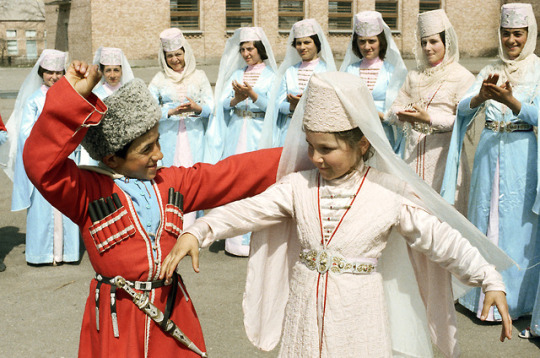
Young residents of Dzuarikau village performing a dance at a folklore concert. Republic of Northern Ossetia-Ala, Russia.
Photographed by Yakov Berliner.
The Ossetians: From nomads and warriors to the artists of the Caucasus
“A people that miraculously survived in the mountains after the Tatar-Mongolian invasions of the Middle Ages, today the Ossetians are renowned for being the creative intelligentsia of the Caucasus and the custodians of an unusual form of Christianity.
For Alik Pagayev, an Ossetian who manages a troupe at the Narty Theater in Vladikavkaz, creativity is in the blood of his people.
”I was born in a mountain village and we had this joke: 'Throw a balalaika out of your window, anyone who catches it can play it,” he says.
Vladikavkaz, the capital of North Ossetia, a small republic on Russia’s southern edge bordering Georgia, is called the “Caucasian St. Petersburg.” No other city in the North Caucasus has so many creative people: artists, photographers, designers and performers.
Creative abilities, however, are not the only national trait of the Ossetians. Pagayev says that every Ossetian has military skills and talents for working with horses in their blood.
The Ossetians [claim descendants] from Iranian-speaking nomads – the Scythians and the Sarmatians. In historical writings from the 2nd century A.D. these tribes were known for their serious military and political might.
By the 11th century A.D. the medieval kingdom of Alania had been established in the region. Its inhabitants were famous for their military skills: The main army consisted of the cavalry. Despite their glorious reputation, the Alans could not fight off the Tatar-Mongolian invasion and in the 14th century they were practically destroyed as a people. Only few hundred Alans remained in the mountains. However, the nation managed to survive and later it successfully assimilated in Russia.
”The Caucasus started to become a part of Russia in the 18th century. Our republic was one of the first,” explains Anna Kabisova, a photographer and photojournalist.
”The Ossetians perceived these changes as a salvation since it is difficult to survive in the mountains and the intelligentsia understood that it was important to develop. A step towards Russia implied opportunity. Back then many Ossetians went to study in St. Petersburg. That is how this place acquired many artists, sculptors and then its own influential art school, its own distinguishing style,” she said.
In her view, such open-mindedness to new cultures is also a national trait. ”The reason lies in religion. The Ossetians are Christians. So it is easier for them, in comparison to the Muslim republics, to find common ground with the Russian population.”
Actually, the Christianity found in the republic is not entirely traditional. Pagan beliefs are also strong here. The Ossetians have dozens of popular religious celebrations with various rituals. There are symbolic peace sacrifices, for example, slaughtering a chicken or a sheep for guests at a feast.
The famous Ossetian national pies are sacred food. These round, thin pies with meat, cheese and potatoes in the Ossetian worldview represent the sun. During a holiday each family places three pies on the table. They also have local breweries.
For many occasions women brew beer according to the national recipe. The Ossetians have their own Oktoberfest. Each October Vladikavkaz holds an Ossetian beer festival/competition, to which Ossetians come from Russia and other countries. The drink, in its aspect and taste, is similar to kvas, the Russian malt drink, and is around 1.5-2 percent alcohol.
The beer is brewed in a large cauldron over a fire. Its main ingredients are the typical ones: hops, malt. But there are also special ones such as lamb ribs and sugar – there are many different recipes.
”Ask me what I hate doing most and I'll respond: trading,” says Alik Pagayev, describing the national character. "The Ossetians don't have an entrepreneurial spirit. We have many talented artists, good athletes, especially in freestyle wrestling, horse breeders, but commerce is really not our thing.”
Pagayev also says that tolerance and tact are two other national traits.
”I worked in [the neighboring republic of] Kabardino-Balkaria for three years and could not get used to the fact that they speak their national language. I would go to someone's house and they would speak their own language. I wouldn't understand anything and someone would have to translate the general meaning of the conversation.
”In Ossetia it's not like that. If there’s even one guest among us, we speak Russian. A friend of mine from Chechnya would often visit us and once he heard people speaking Ossetian on a street in Vladikavkaz. He was surprised because he had thought that we always speak Russian.”
In fact, Pagayev explains, there are some young people who do not even know their national language, which he says is sad.
”Our language must be preserved. At home my children speak only Ossetian. If I hear them speak Russian, I tell them, 'You'll speak Russian where you have to, but at home speak your native language,'” he says.
Another important national trait is learning, he explains: ”People always wonder: A young guy from a remote mountain village goes to study in St. Petersburg or Moscow and in two years he fully integrates, speaks Russian without an accent and produces good results in his studies. This is an important trait. I think this is what helped our people survive the difficult times.”
Source: https://www.rbth.com
#ossetian#ossetia#tradition#culture#europe#dance#ossetians#caucasus#ossetia-alania#caucasian#christians#north ossetians#christianity
135 notes
·
View notes
Photo

Regions of Russia by length of its name.
u/Roblexa:
The length is based on number of Cyrillic letters. Blanks and hyphens were counted as a letter, while types of the subject (Республика, область, etc) were not.
Examples (bolded parts are counted): Алтайский край (Altai Krai), Республика Северная Осетия-Алания (Republic of North Ossetia-Alania), Ханты-Мансийский автономный округ — Югра (Khanty-Mansi Autonomous Okrug — Yugra, the "Yugra" part is excluded as it is usually left out)
86 notes
·
View notes
Photo
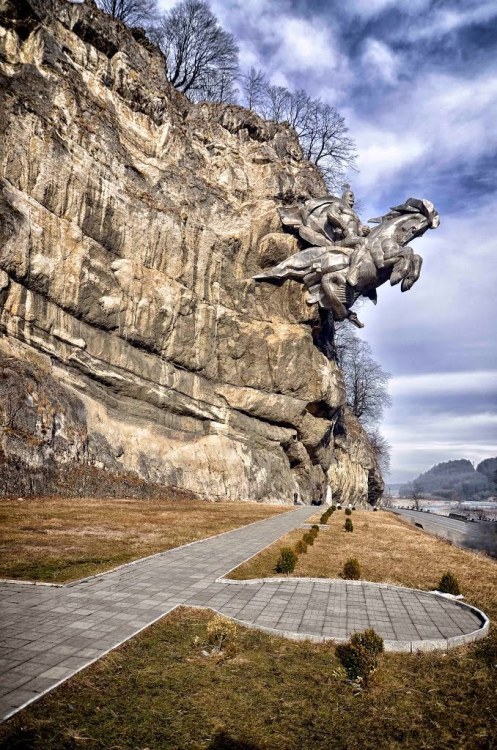
red-lipstick:“ Nykhas Uastyrdzhi, The Monument to Saint George on Ossetian Military Road, Alagir, Republic of North Ossetia–Alania, Russia”
1 note
·
View note
Photo
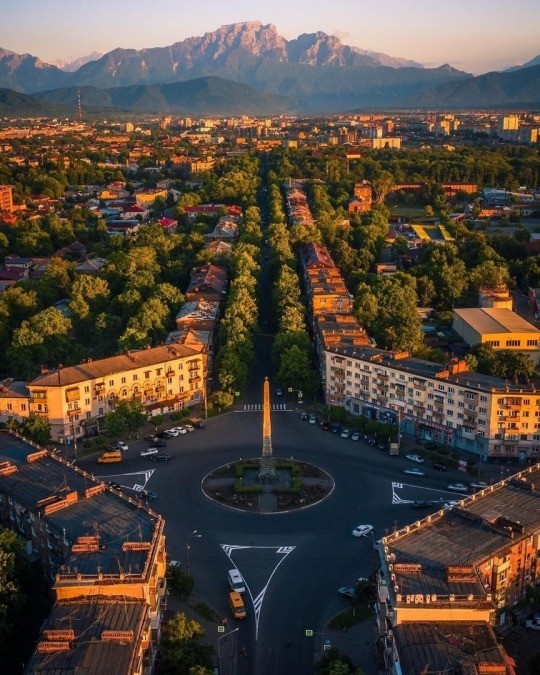





Vladikavkaz, the capital of the Republic of North Ossetia-Alania
396 notes
·
View notes